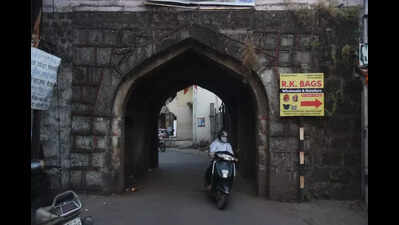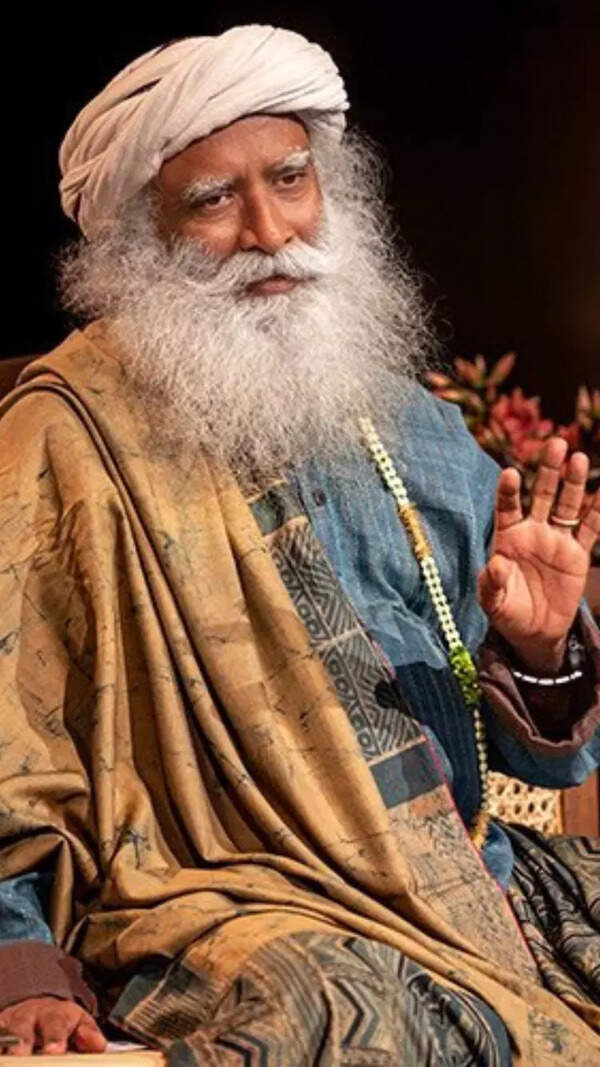- News
- City News
- nagpur News
- Heritage Frozen In Time, Crumbles In Apathy
Trending
Heritage Frozen In Time, Crumbles In Apathy
Nagpur: "Areee... foreigners to bahut aata hai yaha," said Haseena with a big smile, pointing at the bastion towering over 20 feet, now almost swallowed by wild growth. Only the lower 4–5 feet of the stone structure remains visible. Once among the first pieces of modern infrastructure, the Gond Fort — located in Mahal, the heart of Nagpur — is today barely recognisable to new generations.
Locally known as ‘Buruj' and ‘Damdama', it's said to have one of the few surviving cannons, named Mariam, at the top, claim residents and experts. It's the last of the original four bastions. "A lot of foreigners come here, excited to see this. They talk in English, so we barely understand anything, but they seem very interested. They click pictures of the bastion and of themselves in front of it," Haseena said, recalling a recent foreign group that came to explore Nagpur's cultural heritage.
Another local, seated next to her, added, "I've been living here for ages, but the last time these weeds and shrubs were cleared must have been at least 15 years ago. And that's me being lenient — it's probably closer to 20."
Mandira Neware, an architect and regular heritage walk guide, says, "We don't have an exact date for when the fort was built, but the buruj were destroyed in 1637 by Mughal sardar Khandauran during the siege of Nagpur. This fort or palace marks the beginning of modern Nagpur, which is why Bakht Buland Shah is often credited as the founder of the modern city. The history and architecture here are incredible — having pride in it is what will keep it alive in the hearts of Nagpurkars."
Neware points out the craftsmanship, explaining that artisans from North India were brought in to build the temples in red sandstone. "The stones were brought from Rajasthan in bullock carts, and everything you see here was hand-carved — there were no machines then," said Ashish Hazare, 48, as he walked us through the complex.
On entering from the main gate, to the left is the temple of Lord Shiva — Raghurajeshwar — flanked by temples dedicated to Lord Hanuman and Lord Ganesh. The Shiva temple, built with Rajasthani stone in the late 1700s, stands out as an architectural gem. Deeper inside is another marvel — the Lakshmi Narayan temple — currently maintained by the Hazare family.
"I wash and clean the entire temple area every day. But there's still so much more that could happen here, considering the space," Hazare said, holding up a stone fragment weighing over 6kg that fell just a month ago. "It doesn't happen often, but yes — pieces fall two to three times a year."
The temples and the surrounding area, like the Gond Fort and its bastion, are overgrown with weeds, and the temple structure shows cracks and damage — pillars chipped and walls fading.
Anoop Kumar, chairman of the Heritage Conservation Committee, clarified, "Our job is to frame rules for heritage conservation. We can't intervene directly with private properties. Owners are responsible for maintenance and restoration within our regulatory framework. It's not only the administration but everyone must take up the responsibility to preserve our rich cultural heritage."
Municipal commissioner and administrator Abhijeet Chaudhari told TOI that NMC is focusing on cleanliness at heritage sites within city limits. He added that the civic body has proposed a heritage museum near Zero Mile and has begun work on restoring Udasin Math and the city's first town hall at Gandhibagh. A separate conservation project for a chhatri at Kasturchand Park is also underway, monitored by the district collector.
End of Article
Follow Us On Social Media












